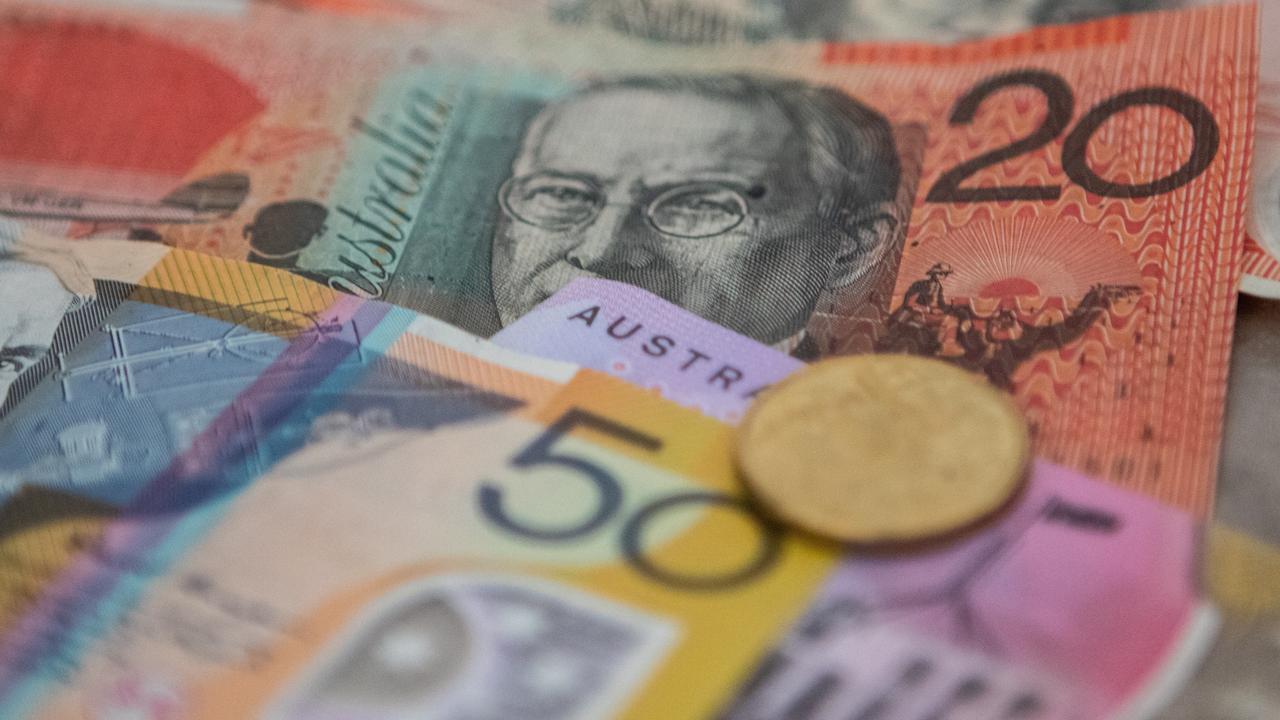Aussies’ top financial worries revealed
See how your personal financial situation stacks up against other Australians, with new research revealing some startling figures.
The price of groceries, petrol and rent are weighing heavily on Australian minds, while those who are carrying debt owe a lot more than a year ago, according to new research.
The nation’s biggest financial comparison site, Canstar, has released its latest annual consumer pulse report after gathering opinions from more than 2000 adults.
“Canstar’s report findings show that everyday living costs are hurting the hip pockets of Australians,” group executive of financial services Steve Mickenbecker said.
“Prices are rising faster than wages, making it tougher to put food on the table and fuel in the tank.”
The research found almost one-third of Australians were carrying debt beyond a mortgage, owing $46,020 on average, which is a spike of 52 per cent or $15,832 from last year.
Credit cards remain the main way Aussies are getting into the red, but buy-now-pay-later (BNPL) debt is on the rise.
A quarter of those indebted are carrying BNPL debt, up from just 18 per cent a year ago.
“It’s not just the younger generations, either,” Mr Mickenbecker said.
“Canstar’s results show 27 per cent of Gen X and one in 10 Baby Boomers with debt outside of a mortgage owe money on buy now pay later, reflecting an ongoing shift away from plastic towards interest-free payment plans.
“The debt story is not all doom and gloom, as the majority – 76 per cent – of Australians with money owing feel that they can manage it.”
The company also found the median amount Australians had in savings and investments outside of assets or superannuation had plunged to $5000 from $15,000 last year.
“Savings balances took a tumble in 2021, which could come down to a number of pandemic-related factors including stricter eligibility criteria for Covid-19 relief payments and the end of the early access to superannuation scheme, forcing some people to access their nest egg to get by,” Mr Mickenbecker said.
Worryingly, one in four aren’t setting any money aside, with 73 per cent saying they are living pay cheque to pay cheque, up from 68 per cent in 2020.
“Australia became a nation of two-speed savers during the pandemic,” Mr Mickenbecker said.
“Some were able to improve their financial situation due to limited spending opportunities, while others were left worse-off.”
The proportion of respondents who feel they’re living within their means fell from 73 per cent to 66 per cent, suggesting Australians are either feeling strapped for cash after the winding back of Covid-19 support measures, or are loosening the purse strings as the nation opens back up.
While some Australians took a financial hit during the pandemic, others were able to focus on building wealth, with one in five Australians dipping their toe in investing for the first time this year, led by Gen Z and Millennials.
Shares were overwhelmingly the most popular form of investment, followed by property and cryptocurrency.
They were appealing because the top savings account interest rate has fallen from 1.75 per cent in January to 1.35 per cent currently, according to Canstar analysis, “which hardly makes for lucrative returns compared to the potential to be had with other investment types”, Mr Mickenbecker said.
“Digital currencies will continue to be a reckoning force in the year ahead, despite their volatility,” he added.
The research also found property owners estimated they had on average $312,973 in home equity, thanks to a 22 per cent surge in property prices over the past year and low interest rates.
Just over one quarter of owners are considering accessing this equity, with the top options being to renovate (28 per cent), buy an investment property (24 per cent) and invest in shares (16 per cent).
Gen Z is the generation deemed to have it the hardest when it comes to buying property, but just 21 per cent of respondents felt parents had an obligation to help their kids buy their first home, down from 25 per cent last year, the report also revealed.
“If the Australian dream of home ownership is to survive this decade, we need to slow investment lending by easing the brakes on now,” Mr Mickenbecker said.
“If next year is another year like 2021, there will be a need to slam on the brakes.”
Check out the full report here.
Originally published as Indebted Australians owe $46,020 on average, price of groceries, petrol and rent weighing heavily on minds
For all the latest business News Click Here

